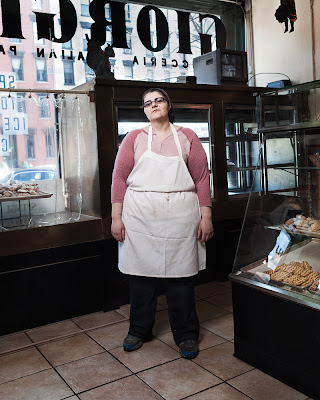Passion is lazy. It is grounded to earth and body, an ally of need and consumption. In a word temporal. Like other emotions, it is a state of being that will wax and wane as we travel between different experiences and conditions. It will leave you at times, only to return and disappear again.
With so many photography competitions calling for entries and other opportunities requiring writing, it might be a seductive word to scribble as you grasp for what you want your audience to feel. Though you may be tempted, be wary of it's capricious fire. Meaningful work deserves language that is more substantial – something more present, less temporary.
If we have shared time in a class, you will be familiar with themes that I introduce every few semesters. Spring Picture Review alumni and my current classes are tasked with the following observation from Warren Buffett, "Only when the tide goes out do you discover who has been swimming naked."
What a great quote and impactful message. It is about how quality is veiled when participation is easy and the fortitude needed to flourish when conditions are not so accommodating.
I am certain Mr. Buffett's success and expertise has been seasoned with something denser than passion. In my experience the artists I have studied and loved the most have little regard or reliance upon it, as well as it's sister flame, inspiration. They are too busy working and making things, under any conditions, impassioned or not. One of my heroes is particularly perspicuous about this idea, eloquently stated as "Desire trumps passion every time."
With so many photography competitions calling for entries and other opportunities requiring writing, it might be a seductive word to scribble as you grasp for what you want your audience to feel. Though you may be tempted, be wary of it's capricious fire. Meaningful work deserves language that is more substantial – something more present, less temporary.
If we have shared time in a class, you will be familiar with themes that I introduce every few semesters. Spring Picture Review alumni and my current classes are tasked with the following observation from Warren Buffett, "Only when the tide goes out do you discover who has been swimming naked."
What a great quote and impactful message. It is about how quality is veiled when participation is easy and the fortitude needed to flourish when conditions are not so accommodating.
I am certain Mr. Buffett's success and expertise has been seasoned with something denser than passion. In my experience the artists I have studied and loved the most have little regard or reliance upon it, as well as it's sister flame, inspiration. They are too busy working and making things, under any conditions, impassioned or not. One of my heroes is particularly perspicuous about this idea, eloquently stated as "Desire trumps passion every time."
Thomas Keller is an American born chef, largely known for his exacting excellence and contribution to the renaissance of the farm to table movement in contemporary restaurant culture. He reminds me of Irving Penn – precise craftsmanship and the transcendence from virtuosity to expression. His first book, The French Laundry Cookbook, is a dense collection of captivating stories and photographs alongside complex recipes and techniques. It is truly awesome. I recall a blog at one time that endeavored making all of the food from it's pages, much like the film Julie and Julia – wonderfully committed and obsessed.
In his 2010 TEDxTalk, he presented his ideas on what it takes to build a successful restaurant and career. I trust you will find many parallels and truths not far removed from our world of image making. For example his equations, "Cooking = ingredients + execution" and his recipe for "Rapid Evolution." These are applicable to good photographs and the life we build around our pursuits. I remain struck by his surgical dissection of what ingredients are necessary to manifest excellence and the distinction between desire and passion. I think to myself often, I need to know this! I want to hear, understand and embody what these elements are. The way in which he assembled his team is not unlike Steve Jobs and the rebel band of artisans that launched Macintosh. 24 minutes in total, you will not be disappointed. (the time challenged can skip to 12:45, though regrettable for you to miss anything here!)
This past spring a rather curmudgeonly colleague stumbled into my classroom as we were discussing Mr. Keller. With unsurprising sarcasm the following declaration was given, "This is not photography! This is a Photoshop class, what on earth are you doing?"
Watch the video and I will ask – would you like the spirit of your photographs and practice to be cut from the same cloth as Chef Thomas Keller? Or do you, like my salty colleague, find me a mere charlatan, smitten by a clever ruse with semantics. I maintain there is a brilliantly rare ingredient here – for myself it remains a quiet meditation, as I steady the horizon and gather my resolve against stormy seas.
Watch the video and I will ask – would you like the spirit of your photographs and practice to be cut from the same cloth as Chef Thomas Keller? Or do you, like my salty colleague, find me a mere charlatan, smitten by a clever ruse with semantics. I maintain there is a brilliantly rare ingredient here – for myself it remains a quiet meditation, as I steady the horizon and gather my resolve against stormy seas.
Onward, forward. – Sean Perry




















